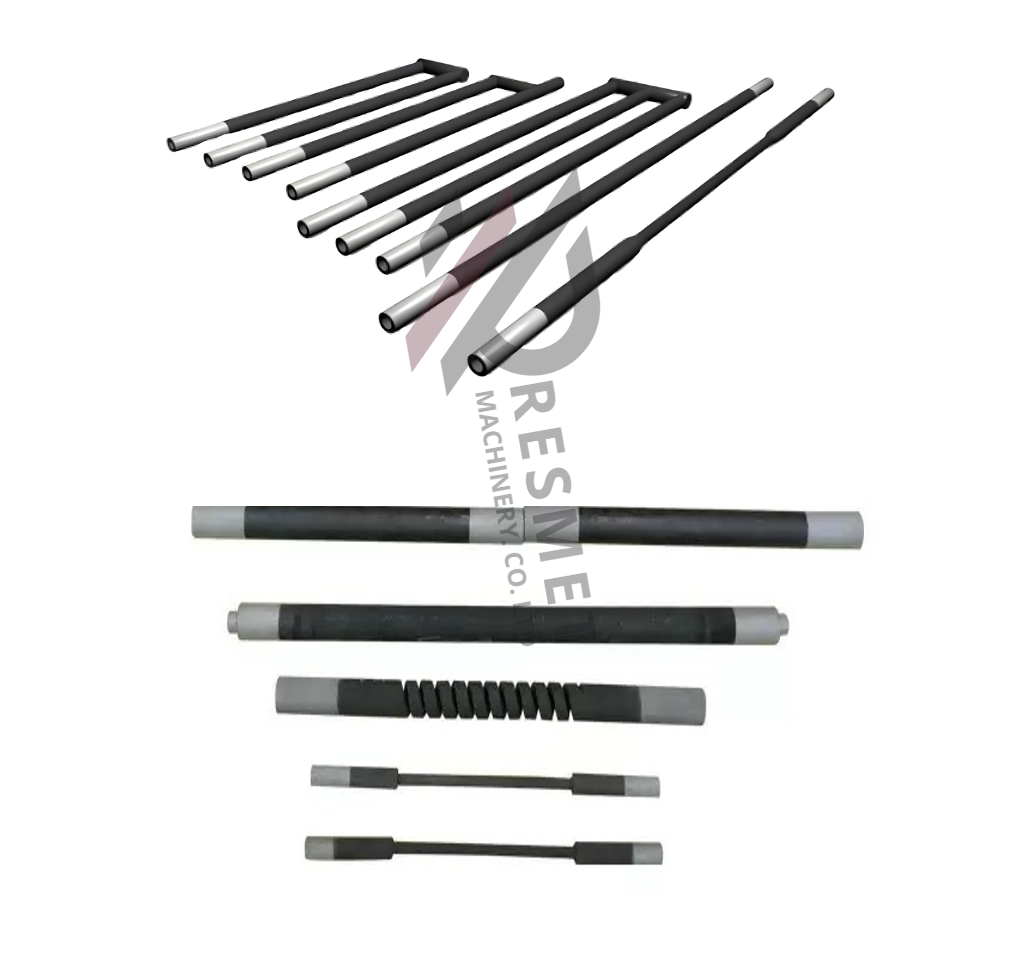
Product Name: Silicon Carbide Heater (SiC Heating Element)
Material: High-purity Hexagonal Silicon Carbide
Type: Non-metallic Electric Heating Element
Our silicon carbide heater (SiC heater) is a high-performance, non-metallic electric heating element made from high-purity hexagonal silicon carbide. Manufactured through precise siliconization, recrystallization, and high-temperature sintering at 2200°C, this heater delivers exceptional thermal efficiency, oxidation resistance, and long operating life. Designed for industrial high-temperature applications, SiC heaters operate reliably in oxidizing atmospheres up to 1450°C and provide a continuous service life of up to 2000 hours.
They offer superior corrosion resistance, chemical stability, low thermal deformation, and easy installation and maintenance, making them an ideal solution for modern industrial furnaces.
1. Texture: Hard, brittle, cold- and heat-resistant
2. Density: 3.2 g/cm³
3. Mohs Hardness: 9.5
4. Specific Heat: 0.17 kcal/kg•°C
5. Thermal Conductivity: 20 kcal/m•h•°C
6. Linear Expansion Coefficient: 5 × 10⁻⁶ (m/°C)
7. Chemical Stability: Strong acid resistance; sensitive to alkaline corrosion at high temperature
8. Oxidation Behavior: Forms protective SiO₂ layer; aging increases resistance gradually
Widely used in high-temperature equipment for:
1. Ceramics
2. Powder Metallurgy
3. Magnetic Materials
4. Glass Manufacturing
5. Metallurgy & Heat Treatment
6. ndustrial Electric Furnaces and Kilns
1. Advanced cold-end production technology
2. Excellent cold-to-hot-end resistance ratio
3. Reduced furnace wall overheating
4. Protective surface coating for enhanced antioxidant performance
5. Slower aging and extended heater lifespan
The service life of a silicon carbide heater is defined by the time required for its electrical resistance to reach four times the original value. Proper material quality and scientific operation significantly improve lifespan and heating performance.